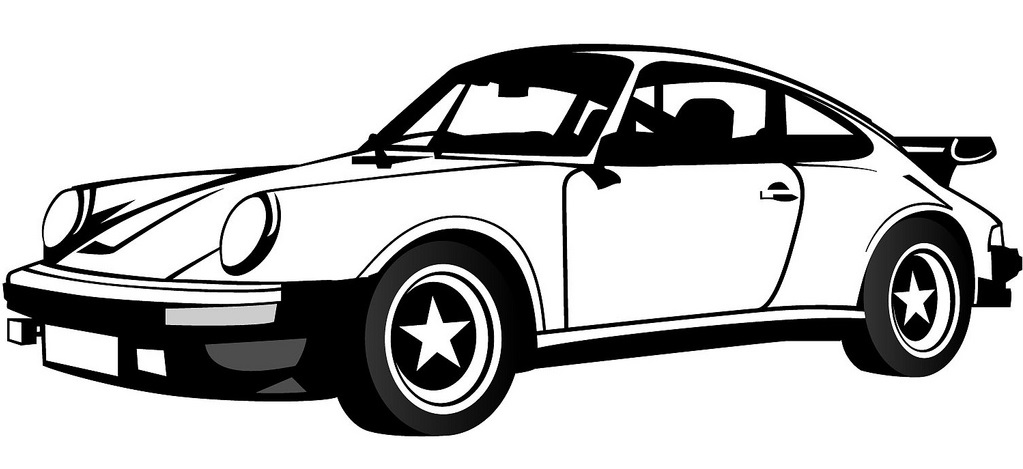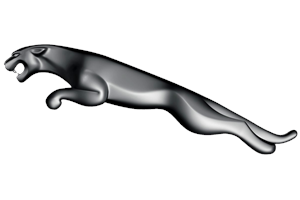A brief history of
Jaguar
Introduction
The car manufacturer Jaguar has made an important impact on the automotive world. In this article we will give a brief but detailed history of the Jaguar marque.
We will look at the origins of Jaguar looking at who, why, where and when Jaguar was founded. We'll look at the design of the iconic Jaguar logo and what are some the more significant Jaguar models.
We'll take a glance at what racing history the Jaguar has and who some of the most important people have been in the history of Jaguar over the years.
Who, where, when and why was
Jaguar founded?
Jaguar is a prestigious British car manufacturer renowned for its elegant and high-performance vehicles. The company's rich history dates back to 1922 when it was originally founded as the Swallow Sidecar Company by Sir William Lyons and William Walmsley. Initially, the company focused on manufacturing motorcycle sidecars before expanding into building automobiles. In 1935, the company changed its name to Jaguar Cars Limited, marking a significant milestone in its evolution.
Jaguar Cars Limited was headquartered in Coventry, England, where it established its manufacturing facilities and design studios. The brand quickly gained recognition for its stylish and powerful vehicles, known for their sleek lines, luxurious interiors, and impressive performance. Jaguar cars became synonymous with British elegance and were embraced by automotive enthusiasts and luxury car buyers around the world.
The driving force behind Jaguar's founding and subsequent success was the vision of Sir William Lyons. He had a passion for creating cars that combined exceptional design, innovative engineering, and exhilarating performance. Lyons aimed to offer vehicles that were not only beautiful but also showcased the latest advancements in automotive technology.
One of the defining moments in Jaguar's history came in the 1950s with the introduction of iconic models like the XK120 sports car and the luxurious Mark II sedan. These cars captured the imagination of automotive enthusiasts and solidified Jaguar's reputation as a manufacturer of high-performance and stylish vehicles.
Over the years, Jaguar has continued to innovate and push the boundaries of automotive design and engineering. The company's commitment to craftsmanship and performance led to the development of iconic models such as the E-Type, widely regarded as one of the most beautiful sports cars ever produced.
In 1990, Jaguar became part of the Ford Motor Company, which provided resources and support for further growth and development. In 2008, Jaguar Land Rover was acquired by Tata Motors, an Indian automotive company, and it continues to thrive under their ownership.
Today, Jaguar maintains its headquarters in Coventry and produces a range of luxury cars that embody the brand's heritage and commitment to elegance and performance. With a combination of timeless design, advanced technology, and exhilarating driving dynamics, Jaguar remains a symbol of automotive excellence and continues to captivate enthusiasts worldwide.
How did the
Jaguar logo originate?

How did the Jaguar logo originate?
The Jaguar logo is an iconic emblem that represents the elegance and power of the brand. The history of the logo dates back to the early days of Jaguar's existence when the company was known as the Swallow Sidecar Company. In its early years, the company used a logo featuring a stylized swallow bird, symbolizing agility and speed.
As the company transitioned to manufacturing automobiles and changed its name to Jaguar Cars Limited, the logo also underwent a transformation. In 1945, the iconic leaping Jaguar emblem was introduced, symbolizing the brand's focus on grace, strength, and speed. The leaping Jaguar became a central element of the logo and has remained a consistent feature throughout Jaguar's history.
The leaping Jaguar logo was designed by Sir William Lyons himself, reflecting his vision for the brand. The sleek and dynamic silhouette of the leaping Jaguar captured the essence of Jaguar's vehicles, which were known for their exceptional performance and agility on the road. The logo conveyed a sense of power, elegance, and sophistication, aligning perfectly with the brand's identity.
Over the years, the Jaguar logo has undergone subtle refinements to modernize its appearance while maintaining its iconic elements. The latest version of the logo features a more minimalist and streamlined design, with the leaping Jaguar rendered in a three-dimensional form. The logo embodies the brand's commitment to innovation and timeless design, representing Jaguar's evolution as a luxury car manufacturer.
The Jaguar logo is instantly recognizable and has become synonymous with the brand's reputation for producing high-quality and luxurious vehicles. It serves as a visual representation of Jaguar's heritage, innovation, and dedication to delivering exceptional driving experiences.
What are some of the significant
Jaguar models?
Jaguar has a rich history of producing exceptional vehicles, and among its lineup, several models stand out for their higher performance and groundbreaking features. From classic models to modern marvels, Jaguar has consistently pushed the boundaries of automotive engineering. Let's explore some of Jaguar's most significant performance models from different quarters of its history.
In the 1960s, Jaguar introduced the iconic E-Type, which quickly became an automotive legend. The E-Type was a masterpiece of design and performance, featuring a sleek and aerodynamic body and a powerful engine. It was capable of reaching impressive speeds and was praised for its handling and exhilarating driving experience. The E-Type cemented Jaguar's reputation as a producer of high-performance sports cars and remains an icon in automotive history.
In the 1970s and 1980s, Jaguar faced some challenges and underwent changes in ownership, but it still managed to produce remarkable vehicles during this period. One notable model from this era is the Jaguar XJ-S. Introduced in 1975, the XJ-S was a grand tourer that carried on the legacy of the legendary E-Type. It featured a distinctive design and a powerful V12 engine, providing a luxurious and exhilarating driving experience. The XJ-S underwent continuous improvements throughout the years, including the introduction of a more refined convertible version in the 1980s.
Another significant model from the 1980s was the Jaguar XJR-9, a purpose-built racing car. Developed to compete in the demanding world of endurance racing, the XJR-9 achieved remarkable success on the track. It made its debut in the 1988 24 Hours of Daytona, where it took the checkered flag in first place. The XJR-9 continued to shine in other endurance races, including the prestigious 24 Hours of Le Mans, where it secured victory in the same year. The success of the XJR-9 showcased Jaguar's engineering prowess and racing heritage.
During the 1970s and 1980s, Jaguar also introduced the XJ6 and XJ12 sedans, which became popular luxury vehicles known for their elegant design, refined interiors, and smooth performance. These models showcased Jaguar's commitment to combining comfort and performance in their offerings, catering to customers who desired a luxurious driving experience without compromising on power and handling.
Despite the challenges faced by the brand during this period, Jaguar continued to produce cars that embodied the marque's essence of elegance and performance. The XJ-S, XJR-9, and the XJ6 and XJ12 sedans played significant roles in the brand's lineup during the 1970s and 1980s. These vehicles contributed to Jaguar's reputation as a manufacturer of sophisticated and exciting automobiles, setting the stage for the brand's future successes.
In the 1970s and 1980s, Jaguar faced challenges, but it made a triumphant return in the 1990s with the introduction of the Jaguar XJ220. The XJ220 was a supercar that showcased Jaguar's engineering prowess. It featured a mid-mounted V6 engine and cutting-edge technologies, such as a lightweight aluminum body and advanced aerodynamics. With its striking design and mind-blowing performance, the XJ220 became one of the fastest production cars of its time and a symbol of Jaguar's commitment to excellence.
Continuing into the 2000s, Jaguar unveiled the F-Type, a modern sports car that captured the essence of Jaguar's performance heritage. The F-Type combined stunning aesthetics with potent engines and dynamic handling. It was available in various trims, including the high-performance F-Type R and the track-focused F-Type SVR. These models boasted impressive power outputs, advanced suspension systems, and aerodynamic enhancements, making them formidable contenders in the sports car segment.
Recently, Jaguar has embraced electric power with the introduction of the Jaguar I-PACE. The I-PACE is Jaguar's first all-electric vehicle and showcases the brand's commitment to innovation. It combines exceptional performance with zero-emission driving, featuring a powerful electric motor and long-range capabilities. The I-PACE has garnered numerous accolades for its groundbreaking design and impressive performance, solidifying Jaguar's position in the evolving landscape of electric mobility.
Throughout its history, Jaguar has consistently produced high-performance models that have captivated automotive enthusiasts. From the iconic E-Type to the modern F-Type and I-PACE, Jaguar has proven its ability to combine elegance, performance, and innovation in its vehicles. These models have left an indelible mark on the automotive industry and have contributed to Jaguar's status as a manufacturer of exceptional performance cars.

One of Jaguar's Most Iconic Models
Who are some of the most important people in
Jaguar's History
Throughout its history, Jaguar has been shaped by the contributions of numerous talented individuals who have played pivotal roles in the brand's success. These individuals, with their expertise and vision, have left an indelible mark on Jaguar's legacy.
One significant figure in Jaguar's history is Sir William Lyons, the co-founder of the company. Lyons, known for his business acumen and design sensibilities, played a crucial role in shaping Jaguar's identity. Under his leadership, Jaguar produced iconic models like the XK120, the C-Type, and the E-Type, which became synonymous with elegance and performance. Lyons' passion for creating beautiful and fast cars laid the foundation for Jaguar's reputation as a luxury automotive brand.
Another influential figure in Jaguar's story is Malcolm Sayer. Sayer was an aerodynamicist and designer who joined Jaguar in the late 1950s. His expertise in aerodynamics and his unique approach to automotive design resulted in the creation of some of Jaguar's most iconic models. Sayer's work can be seen in the sleek and timeless design of the E-Type, which is considered one of the most beautiful cars ever produced. His contributions to the brand's design philosophy and his innovative approach to aerodynamics continue to inspire Jaguar's designers to this day.
In more recent years, the leadership of Ratan Tata, the chairman of Tata Motors, Jaguar's parent company, has been instrumental in revitalizing the brand. Tata's strategic vision and investment in research and development have led to the development of new models and technologies, helping Jaguar stay competitive in the ever-evolving automotive industry. Under Tata's guidance, Jaguar has expanded its product lineup and embraced advancements in electrification and autonomous driving technologies, ensuring the brand's continued relevance in the modern automotive landscape.
Additionally, Jaguar has been fortunate to have talented engineers and designers who have contributed to the development of its groundbreaking vehicles. People like Norman Dewis, Jaguar's chief test driver in the 1950s and 1960s, played a crucial role in refining the brand's cars and pushing their performance limits. Their dedication to excellence and their commitment to delivering exceptional driving experiences have helped establish Jaguar as a manufacturer of high-performance luxury vehicles.
These individuals, along with many others, have played vital roles in shaping Jaguar's identity and success. Their passion, innovation, and dedication to craftsmanship have helped create some of the most iconic and desirable cars in automotive history. Their contributions continue to inspire Jaguar as it looks toward the future, building upon its rich heritage while embracing new technologies and pushing the boundaries of design and performance.

One of the most influential people in the history of Jaguar
Jaguar's Racing History
Jaguar has a rich and storied racing history that has cemented its reputation as a manufacturer of high-performance sports cars. From the early days of motorsport to modern-day racing circuits, Jaguar has left an indelible mark on the racing world.
One of Jaguar's most iconic racing achievements came in the 1950s with the introduction of the Jaguar D-Type. This sleek and aerodynamic sports car made its debut in 1954 and went on to dominate the prestigious 24 Hours of Le Mans race. The D-Type secured victory at Le Mans in 1955, 1956, and 1957, showcasing Jaguar's engineering prowess and establishing the brand as a formidable force in endurance racing.
Another significant milestone in Jaguar's racing history was the introduction of the Jaguar XJ-S in the 1970s. While the XJ-S was primarily known as a luxury grand tourer, it also found success in motorsport. In 1977, the XJ-S entered the prestigious European Touring Car Championship, achieving notable victories against strong competition. The XJ-S also competed in the 24 Hours of Spa-Francorchamps, further demonstrating Jaguar's commitment to racing excellence.
In recent years, Jaguar has continued its racing legacy with the Jaguar I-PACE eTROPHY, an all-electric race series. Launched in 2018, the I-PACE eTROPHY showcased Jaguar's commitment to sustainable racing and cutting-edge technology. The series served as a platform to promote electric mobility and demonstrate the performance capabilities of Jaguar's electric vehicles. With its thrilling races and competitive field, the I-PACE eTROPHY added a new chapter to Jaguar's racing history.
Additionally, Jaguar's involvement in Formula E has further solidified its commitment to sustainable racing. Jaguar Racing made its debut in the FIA Formula E Championship in 2016 and has since become a strong contender in the series. With its all-electric Jaguar I-TYPE race car, the team has achieved podium finishes and demonstrated Jaguar's dedication to pushing the boundaries of electric vehicle technology on the race track.
Jaguar's racing heritage extends beyond the track, with notable rally successes as well. The Jaguar XJ220, originally designed as a high-performance road car, made its mark in the world of rallying. It participated in events such as the British Rally Championship, showcasing its agility and power on challenging rally stages.
From the early victories at Le Mans to the electrifying races in Formula E, Jaguar's racing history is a testament to the brand's commitment to performance, innovation, and pushing the limits of what is possible on the race track. With each racing endeavor, Jaguar has continued to showcase its engineering excellence, capturing the hearts of racing enthusiasts and cementing its place in the annals of motorsport history.
Summary
Jaguar, a renowned British car manufacturer, has established itself as a symbol of elegance, performance, and luxury. With a rich racing heritage spanning several decades, Jaguar has consistently pushed the boundaries of automotive engineering and captured the imagination of automotive enthusiasts worldwide.
From its early victories at the prestigious 24 Hours of Le Mans with the iconic Jaguar D-Type to its recent foray into sustainable racing with Formula E, Jaguar has proven its commitment to high-performance racing and innovative technology. The brand's success on the race track has not only showcased its engineering prowess but also translated into exceptional road cars that offer a perfect blend of luxury, comfort, and exhilarating performance.
Throughout its history, Jaguar has produced iconic models such as the XK120, E-Type, and F-Type, which have become synonymous with automotive excellence. These vehicles embody Jaguar's distinctive design language, combining sleek lines, aerodynamic curves, and a powerful presence. From the elegant sports cars of the past to the cutting-edge electric vehicles of the present, Jaguar continues to evolve and adapt to the ever-changing automotive landscape.
Today, Jaguar stands as a global luxury brand, admired for its commitment to craftsmanship, innovation, and driving pleasure. With a legacy that spans generations, Jaguar continues to captivate automotive enthusiasts with its timeless design, exhilarating performance, and unwavering dedication to pushing the boundaries of automotive excellence.
View Jaguar Car Specifications
More Manufacturer Histories.

























